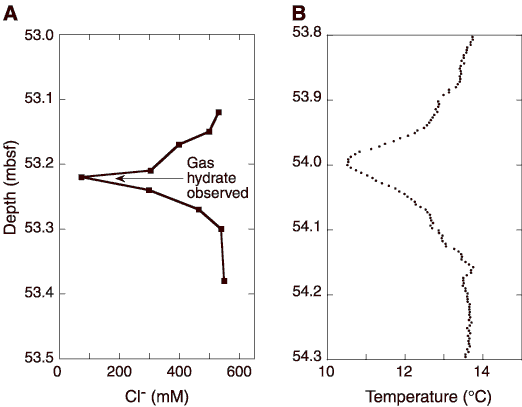
Figure F25. High-resolution analyses of chloride (Cl-) content in a core containing a discrete 2-cm layer of gas hydrate. A. Graph showing the influence of gas hydrate dissociation on the chloride concentration of the pore water. Gas hydrate was observed in Sample 204-1245C-7H-5, 42-44 cm (see arrow), and dissociated to yield freshwater to the sediment. Note that the lowest chloride concentration (73 mM) is present in this sample. As the distance from the gas hydrate increases, so does interstitial chloride concentration. B. Temperature measurements obtained with the IR camera, showing a well-defined temperature anomaly corresponding to a discrete hydrate layer subsequently observed in the core. The differences in depth between the anomaly observed in the catwalk (minimum temperature at 54.0 mbsf) and the presence of gas hydrate (53.22 mbsf) reflects the differences in curatorial depth before and after the core was cut into sections. Matching the depths before and after cutting the core is particularly challenging when dealing with gas-saturated cores, where expansion in the liner results in rapid formation of voids. However, within this section of the core, there is only one distinct hydrate layer; thus, we are confident that the temperature anomaly measured on the catwalk at 54 mbsf corresponds to dissociation of the hydrate layer identified in the core at 53.22
mbsf.



![]()